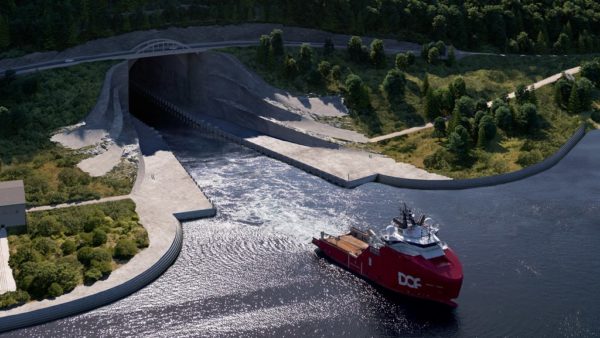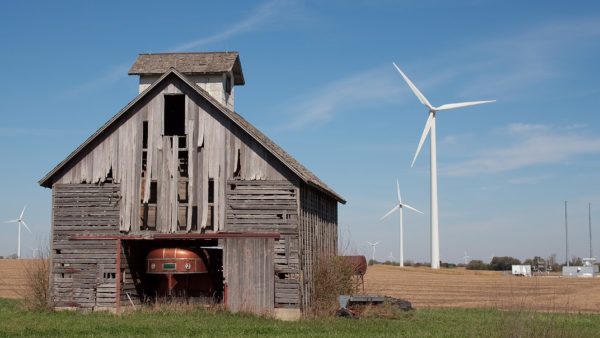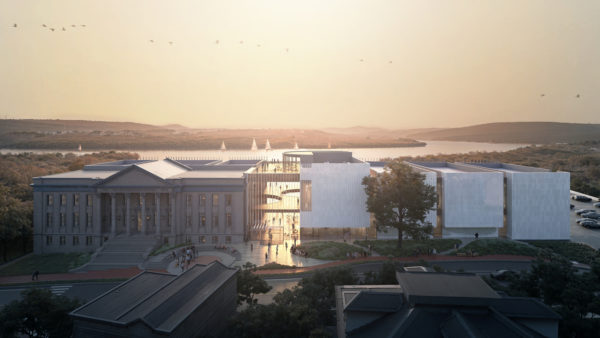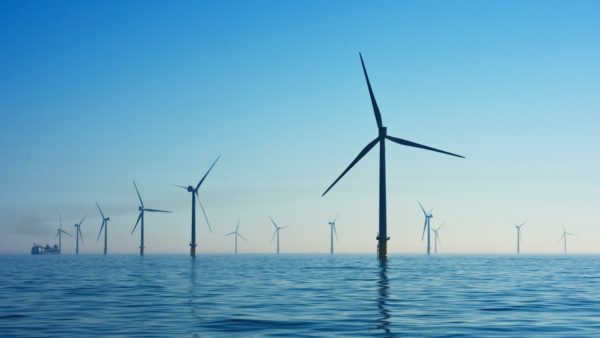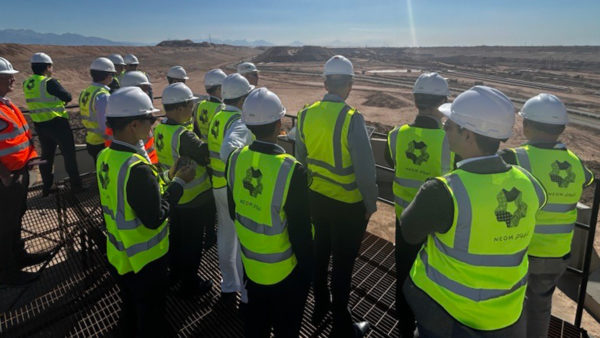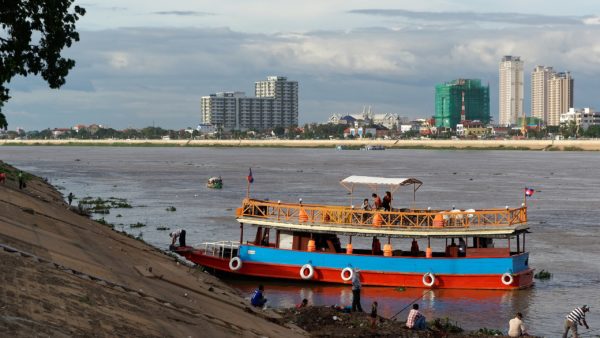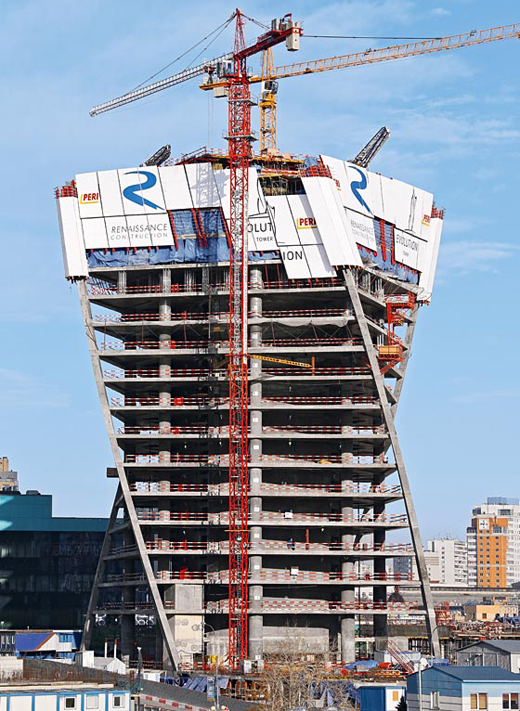
Evolution Tower, part of the international trade centre, "Moscow City", is currently the largest project in the Russian capital. (Credit: PERI)
Crane-independent, self-climbing formwork saves labour on Moscow’s Evolution Tower
At the 249 metre Evolution Tower in Moscow, each of the 52 floors twists by three degrees, so the tower rotates clockwise by more than 150 degrees as it goes up.
While the visual effect is arresting, pouring the concrete floor slabs presented a challenge because the layout changes 52 times, entailing a potentially laborious shuttering and striking regime.
So the project team, led by main contractor CJSC Renaissance Construction of Moscow, settled on self-climbing formwork from Germany’s PERI, which let them avoid a crane and a lot of hassle.
According to PERI, core walls and floor slabs are concreted in one pour, with each floor divided into three sections. Four hydraulic self-climbing (ACS) units have been used to make large working platforms.
As the core floor plan changes one of the ACS platforms is converted to a gallows variant by using four ACS G brackets. This allows the following storeys to be climbed efficiently. For the floor slabs, customised slab tables keep pace with the rate of work.
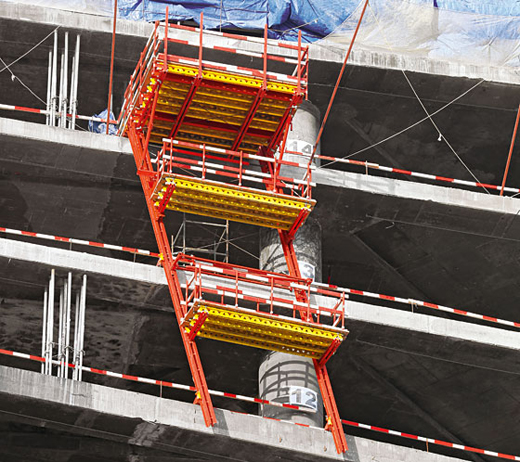
No cranes necessary – even the landing platforms climb on rails. (Credit: PERI)
Rotating in safe conditions
The top three floors under construction are tightly enclosed with a rail-climbing protection panel. The units climb the constant twist of the building in an inclined position, propelled by hydraulics.
The permanently installed rail-guided system ensures a fast and safe climb in inclined positions.
The climbing rails are connected to the building by corresponding slab shoes. In combination with the four climbing units on the rectangular columns, a gap-free enclosure is achieved for safe and quick working at height.
On the sides of the building, rail-climbing (RCS) landing platforms provide temporary storage areas and move loads.
On its inclined climbing path, because circular columns present a permanent obstacle, PERI designed the RCS platforms so they could be adjusted quickly.
For PERI engineers, getting platforms to climb twisted high-rise buildings is nothing new. They did it on Turning Torso in Malmö, Sweden and the two Absolute World Towers in Canada.
Evolution Tower is a bit different because it combines climbing formwork for the vertical core walls and twisted corner supports in connection with the obliquely climbed protection panel and landing platform.
The system was pre-tested to allow fine-tuning.
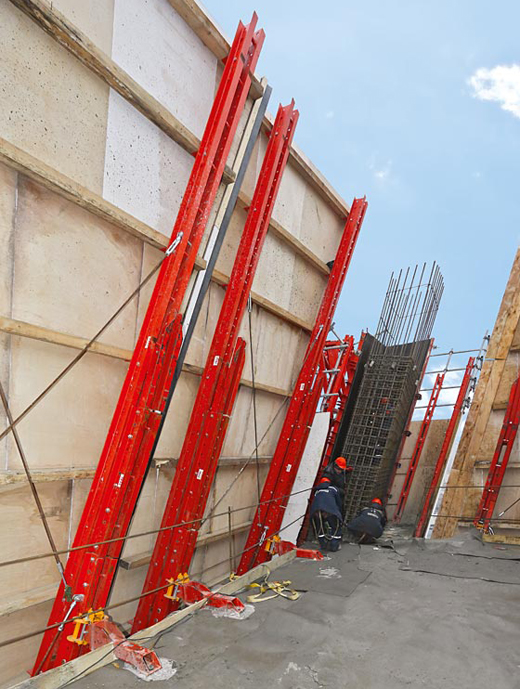
The inclined rails of the protection panel are permanently connected to the building by slab shoes. (Credit: PERI)





